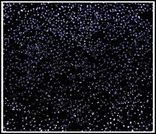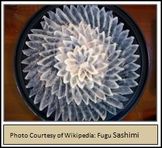The World's Most Expensive Meats
Beluga Caviar: $7000-25,000/2.2 lbs

Beluga caviar comes from eggs of the Beluga sturgeon fish found in The Adriatic Sea, Black Sea, and Caspian Sea. Acquiring the roe involves a long wait, as the Beluga sturgeon takes as many as 20 years to reach sexual maturity. Older beluga fish produce lighter eggs. The eggs range in color from nearly black to diamond white, increasing in value with lightness. The diamond white Almas caviar is the most prized (and most expensive). Chew slowly, though. Unless you’re visiting Kazakhstan, each bite probably cost upwards of $2000. Darker Beluga caviar may be served on toast, in boiled egg whites, with potatoes, or beside crème fraiche, but lighter eggs are always served unaccompanied.
Fugu: $30-100/plate
(+ airfare, potential medical costs, and possible final expenses)

An ancient Japanese expression laments, “I want to eat Fugu, but I don’t want to die.” Fugu (or puffer fish) is among the world’s most dangerous foods. The fish excretes a dangerous toxin, tetrodotoxin, which causes pleasant to fatal effects. In low doses, the chemical causes pleasant tingling sensations. Increased amounts can paralyze and even kill consumers. 75% of puffer related poisonings result in death. For this reason, Japanese Fugu chefs undergo intensive training and must pass a series of tests before attaining license to prepare the delicacy. Poisonous puffer varieties are currently illegal for import into the United States, and the fish live in areas of the Pacific Ocean near Japan, so if you want to play Fugu Roulette, grab your passport and factor in the cost of airfare.
Pata Negra or Jamon Iberico: $96-150/lb

Photo: Wikimedia Commons
Pata Negra, “black foot”, refers to a free roaming breed of Iberian pig. Strong legal protections guard against imposters, controlling the breeding, husbandry, feed, slaughter, and curing process. Shortly after weaning, the Iberian pig feeds less than a month on a diet of barley before its release into Oak forests. There, it freely grazes range on grasses, herbs, acorns and roots. Just before slaughter, the pigs return to ranches, eating only acorns from this point forward. The prevalence of acorn in the pig’s diet results in high oleic acid content, oil touted for aiding in heart, skin, hair, and nail health. After slaughter, expert handlers will salt the legs and hang in air to cure for 12-36 months. The final product results in an expensive and highly desirable marbled nutty meat which will be sliced into paper thin slices. Common accompaniments include bread, membrillo (quince paste), bread and acorn butter, Spanish olives, olive oil, greens, or by itself.
Kobe Beef: $100+/lb

Photo: Wikimedia Commons
Kobe beef originated from Wagyu cattle in areas surrounding Kobe, Japan. The cattle consume diets high in beer and receive daily massages with sake, a practice that relaxes and smoothes skin, hair and muscle. The meat has a smooth marbling of fat, resulting in the nickname, “white beef.” Popularity of the unique delicacy has led to similar production attempts in both Australia and North America. Though the hybrid versions cost considerably less, terrior and cross breeding with American Angus diminish the flavor and texture of the meat. At restaurants, the price tag increases, with entrées sometimes hovering around $300/plate.
